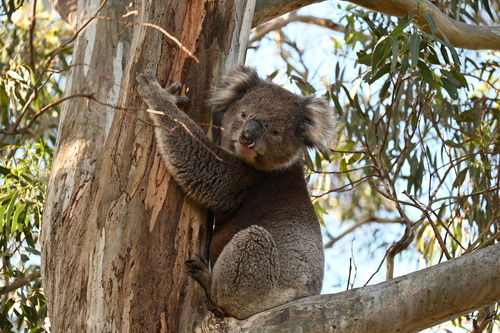
Koala
Perched in eucalyptus trees, the koala (Phascolarctos cinereus) thrives. With its distinctive fluffy ears and spoon-nosed charm, this marsupial naps up to 18 hours a day, digesting nutrient-poor eucalyptus leaves. As arboreal experts, koalas are icons of Australia's unique wildlife.
13 years
Lifespan
45397.0 kg
Weight
Height: 60 - 85 cm
Size
Brown, Grey, White, Grey-Brown
Color
2-3 years
Age of Sexual Maturity
6-7 months
Age of Weaning
20 mph
Top Speed
Vulnerable
Conservation Status
Decreasing
Population Trend
Distribution Range of the Koala
The Phascolarctos cinereus, commonly known as the koala, is native to Australia. It is primarily found in coastal regions of eastern and southern Australia, specifically in the states of Queensland, New South Wales, Victoria, and South Australia.
Koala's Habitat
Environmental Conditions
Koalas inhabit eucalypt woodlands and forests, where their preferred dietary species of trees are abundant. The climate in these regions ranges from tropical in the north to temperate in the south, providing a variety of environmental conditions. The koalas' habitat is typically characterized by sufficient rainfall to support dense forest or woodland, although they can survive in relatively open environments that provide enough food sources.
Ecological Niche
Koalas are arboreal marsupials that primarily feed on the leaves of eucalyptus trees. They exhibit a highly specialized diet, relying on specific types of eucalypt trees that are nutritional enough to sustain them. This diet shapes their ecological niche, as they require large territories with access to multiple trees to meet their dietary and territorial needs. Koalas also play a crucial role in their ecosystem as leaf consumers and as prey for various large predators.
Copyright @ Nature Style Limited. All Rights Reserved.
 English
English